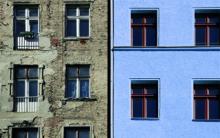Innovation in refurb
Innovation In Refurb
Refurbishment. It’s not as glamorous as new build, not as routine as maintenance, yet it’s a part of the construction market that we’ve worked hard to make a particular strength of ours.
Buildings are undergoing refurbishment all the time. A freshen up, a change of use or owner, a facelift or rebrand, an extension or revision to the existing layout. There are so many different ways a structure can still be itself and yet change completely, and when it changes there are consequences for smoke control.
Ring the changes
Smoke control systems are designed to keep escape routes clear should a fire break out, and allow easier access for Fire Brigade personnel. The systems are cleverly designed with established best practise and CFD modelling, and their means of operation depends upon:
- The equipment used
- The layout of the building
- The “cause and effect” protocol programmed into the controls
As you can probably imagine, changing a building’s layout will have potential effects on the flow of smoke or fresh air, meaning a review of the smoke control system is mandatory. It may be discovered that the equipment in place (e.g. fans, vents, dampers or controls) is no longer correctly located.
But a refurbishment is also an opportunity to review the equipment itself. Is it current? Is it energy efficient? How close is it to the end of its serviceable life?
The truth is that by the time a building is due a refurbishment, it’s probably time the smoke control equipment is due one too.
Refurbs, not rip-outs
So it’s time to refurb the system. A lot of maintenance contractors will tell you “this is all out of date, it’s unsafe, it needs to go,” before presenting you with a chunky bill and weeks/months of major disruption while the works are undertaken.
We would recommend you adopt an innovative way of refurbishing a smoke control system that keeps as many components in place as possible, repairing, upgrading and moving them to wherever they’re most needed. It makes sense to stage works so that bills are more manageable and so your building can keep operating during the works – without risking the safety of occupants.
Bolster this with CFD studies to ensure the effectiveness of the revised system, and when you do replace components always use the best equipment available to ensure efficiency and safety.
Then ensure you use up-to-date sensors and controls. Sometimes you will even be able to create dual or multi-purpose systems, by e.g. adding functionality such as fume management, or improve energy use by adding inverters to fans. The existing scheme can sometimes be by introducing environmental ventilation and/or increased levels of natural daylight.
In this way you don’t throw the baby out with the bathwater but you do end up with a perfectly-specified system that didn’t cost the earth.
By Bob Gate
UK Business Development and Marketing Manager.

